How to choose your military knife?

When choosing a tactical knife, it is important to consider the most common use cases it will face. Almost any blade can be used in a self-defense situation, so focus on activities you intend to perform on a regular basis. With so many options to choose from, starting here will lead to the best design and materials from which to choose the perfect knife.
Everyday Knives (EDC)
Everyday knives are lightweight, ergonomic and easy to take anywhere. They are usually foldable to save space and come with pocket clips for easy transport.
survival knives
If you spend a lot of time outdoors or want to be prepared for any situation, survival knives are a great choice. Normally made with a fixed blade for maximum strength, survival knives often feature serrations designed for cutting wood and other fibrous materials.
Serving knives
A serrated knife is a good option for police and military personnel because they tend to stay sharp longer. A good utility knife will hold an edge, resist corrosion, and deploy quickly.
hunting knives
A hunting knife largely depends on the game being hunted. Small animals may need a smaller, sharper blade, while larger game will need a harder edge.
Utility Knives
A general purpose utility knife can do a bit of everything. It must be able to cut well and withstand frequent and prolonged use. Look for a knife with a corrosion-resistant blade that holds the edge well.
Blade edge types
After determining the type of regular use for your knife, the next step is to choose an edge type. There are two types of knife blade: smooth and combined. Each type has certain advantages best suited to specific cutting needs.
-
Combo Edge Knives

Combination edge knives have serrations (saw-like tips) on one half of the blade and a plain edge on the other half of the blade. A combination edge offers the chopping and chopping ability of a serrated edge and the clean, precise cutting of a plain edge in a single blade. This type of edge is ideal for survival and hunting as its serrations easily cut through brush and wild game. Discover our tactical military knives.
-
Smooth blade knives
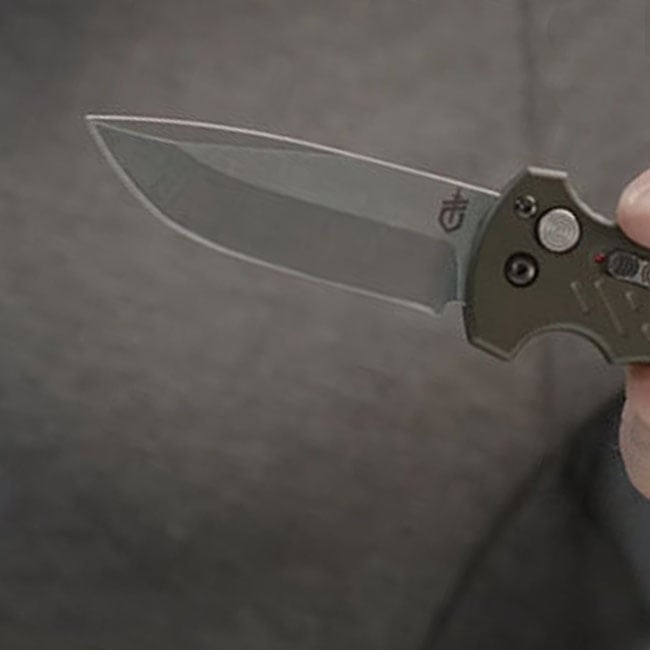
A smooth-edged blade has no serrations. Its straight, sharp edge is designed to cut precisely and efficiently through softer surfaces. This type of edge is often used as a utility knife because it sharpens quickly and resists corrosion. The ability to cut with precision also makes smooth-edged blades excellent utility knives. Discover our tactical military knives.
Fixed vs. Folding
Another important aspect to consider when choosing a tactical knife is to choose between a fixed blade or a folding blade. Like single and combination edges, fixed and folding blades each offer distinct benefits for different scenarios.
-
Fixed Blade Knives

Fixed blades are strong. Generally larger than folding blades, they are sturdy, easy to clean and deploy quickly. Their size and strength prevent them from breaking unexpectedly. Fixed blade knives are especially good for work, survival, and hunting due to their reliability. Discover our tactical military knives.
-
Folding Blade Knives
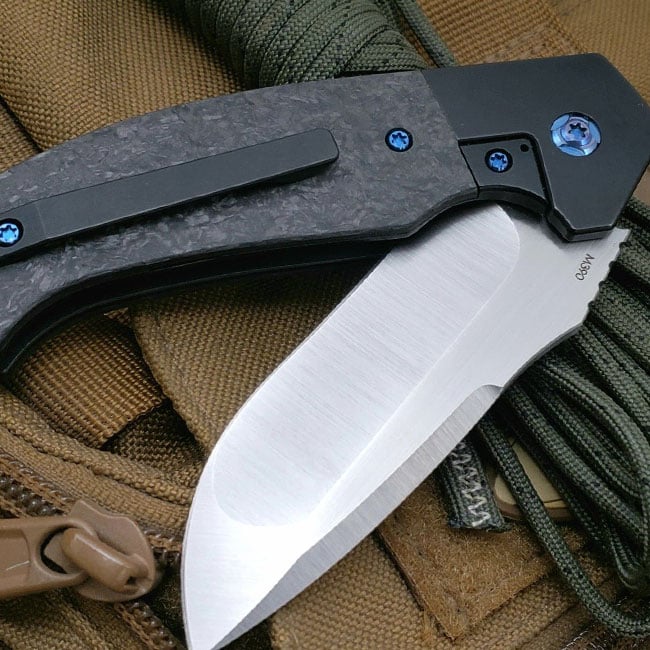
A folding blade retracts into the knife handle. As a result, folding blades are compact and easier to transport. Because of this portability, folding blade knives are popular for EDC, utilities, police, and military. Discover our tactical military knives.
Blade Styles
Uses, edge types, and fixed/folding blades are very general considerations when choosing your knife. Blade styles, on the other hand, are specifically designed for certain cutting tasks. The blade style you choose should (like all other aspects of a knife) be based on what you intend to use your knife for.
-
Drop Point Knives

As the name suggests, the spine of a drop point knife blade literally drops to meet the edge at one point. A drop point blade is designed for excellent balance and comfortable use. Their construction makes it easy to extend your finger along the spine of the blade to apply more pressure for precise cutting and slicing. Discover our tactical military knives.
-
Clip Point Knives

A clip point blade looks like a standard blade with the top part cut off (this cut part can be straight or curved). Clipping the blade provides better punching capabilities due to less surface area at the tip and better control when cutting. The cut side of the blade can even be sharpened to a second edge for maximum efficiency. Discover our tactical military knives.
-
Straight backed knives
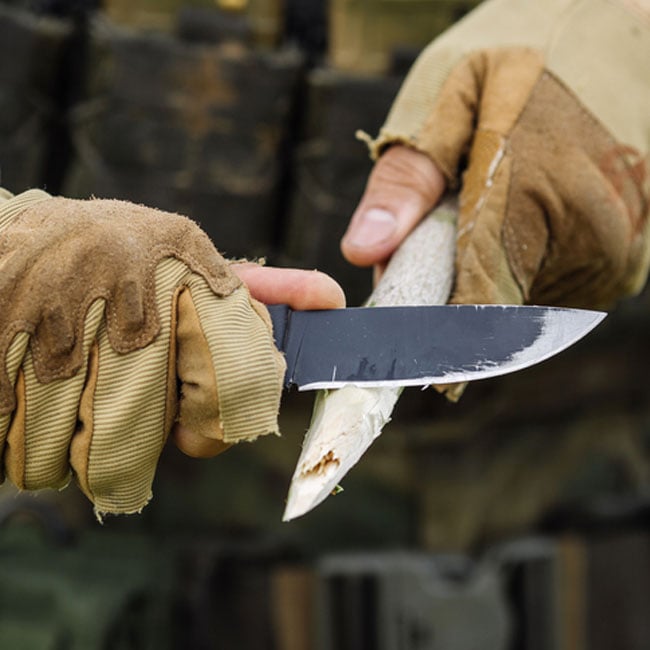
On a straight backed knife blade, the back of the blade does not curve. This stiffness provides more surface area on the edge. As a result, this type of blade has good slicing abilities, decent punching abilities, and excellent balance in its overall construction. Discover our tactical military knives.
-
Spear point knives
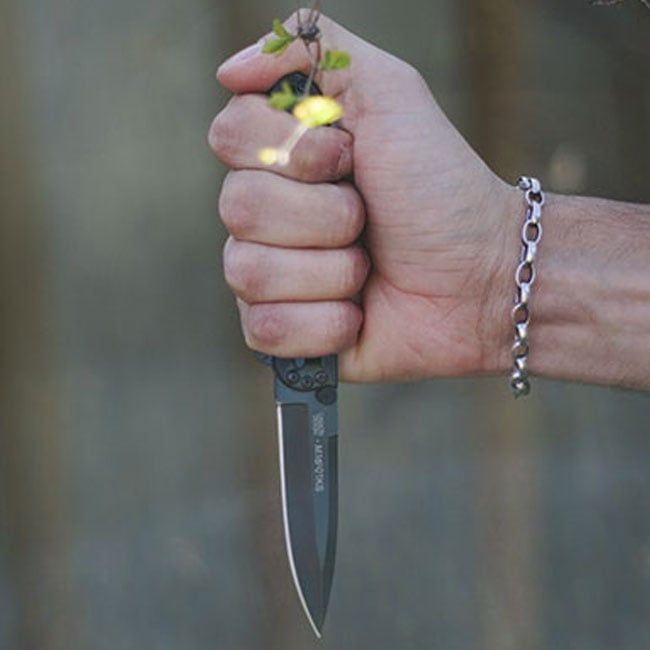
On a spear point knife blade, the spine and cutting edge both come at a similar angle to resemble a spear. This type of blade is unmatched in its piercing ability. The spearhead is an intimidating and effective self-defense tool in an emergency. Discover our tactical military knives.
-
Tanto knives

The edge of a tanto blade slants to meet the spine at one point. The result is a large edge and a kind of mini edge where the blade tilts. Tanto blades are a favorite style among military and law enforcement. The angled point is hard and pierces well. Discover our tactical military knives.
-
Wharncliffe Knives
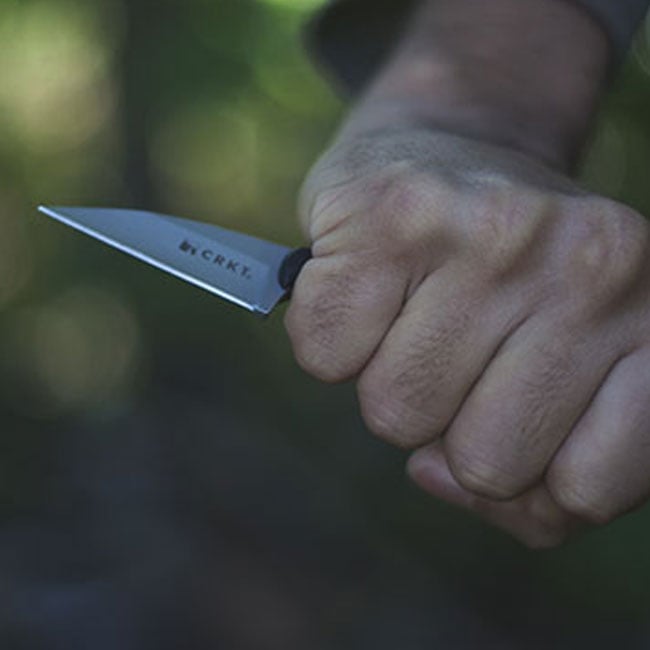
A wharncliffe blade consists of a totally flat cutting edge and a spine that gradually drops to meet the tip of the blade; they are essentially inverted straight-backed blades. This type of blade is best for precision cutting. The flat edge allows for long, smooth cuts on flat surfaces. Discover our tactical military knives.
-
Drag point knives
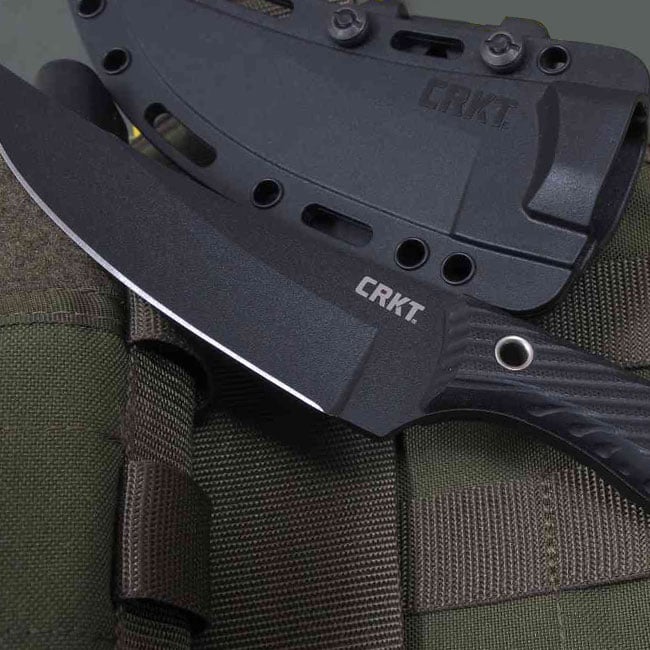
On a drag point knife blade, the cutting edge curves upward to meet the spine at a point above the handle. The design provides more edge surface ideal for slicing and peeling. The drag point blades also provide excellent punching capabilities. Discover our tactical military knives.
Blade material

While blade style is a good indicator of what a knife is built for, a more telling feature is the blade material itself. As with other knife qualities, you should choose the material of a blade according to the use that will be made of it. These are a few common attributes of a knife blade that are most directly affected by the material.
-
Blade resistance: The ability of a blade to resist breaking or fracturing
-
Edge retention: the ability of a blade to stay sharp without the need for frequent sharpening
-
Corrosion resistance : The ability of a blade to avoid deterioration due to moisture, humidity, salt or other chemical processes.
-
Ease of sharpening: ability of a blade to be sharpened without great difficulty
It is very rare for a knife to exhibit skills in all of these categories. Most of the time a blade will only excel in one or two as there is no blade material that can perform well in all of them.
Most blades are made of steel due to its stiffness, malleability, and ability to resist corrosion. Steel is an alloy of iron and carbon with high tensile strength and relatively low cost. Blade manufacturers often add elements to the steel such as vanadium for added strength or additional carbon for corrosion resistance. Here are some common types of steel found in knife blades and their practical applications.
High carbon steel knives

All steel is made up of iron and carbon, but some steels are made with higher levels of carbon than others. This high carbon steel is harder and stronger than ordinary steel. Added carbon tends to make steel more brittle and therefore a high carbon steel blade may be prone to chipping or splintering. The most common high carbon steel, 1095, makes an excellent blade material. Discover our tactical military knives.
High vanadium steel knives
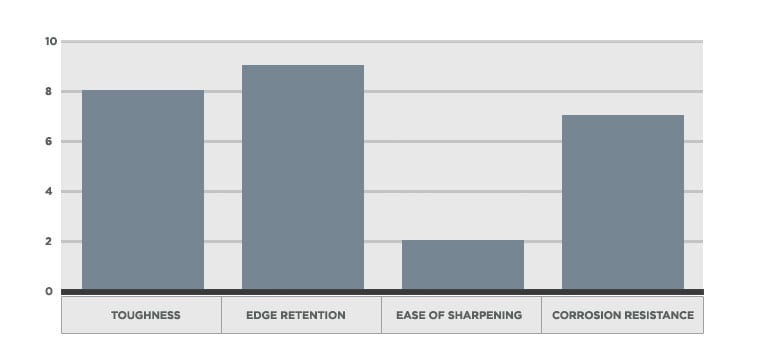
High vanadium steel is resistant to the elements and impact. Its rigid construction resists corrosion and rust very well. It also holds an edge and requires minimal sharpening, but when it becomes dull sharpening can be difficult.
Discover our tactical military knives.
Stainless steel knives
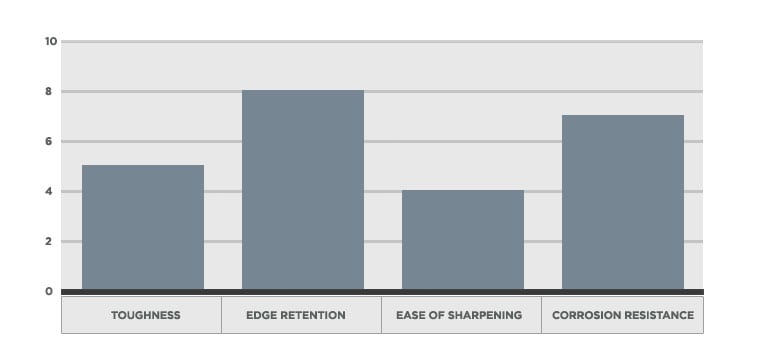
Stainless steel is one of the most common metals used in commercial products. Its 11% chromium construction means it resists corrosion very well and its minimum carbon content of 1.2% makes it exceptionally durable. There are dozens of alloys that fall under stainless steel, but some are found in knife blades more than others.
Discover our tactical military knives.
CPM-S30V knives
Featuring a blend of metals that results in a very refined grain, the CPM-S30V is a sharp and tough stainless steel. It resists corrosion as well as any other type of stainless steel and is relatively easy to sharpen, making it an excellent choice for a knife blade.
420HC knives
The "HC" in "420 HC" means "high carbon". It is generally considered the best of the 400 series of stainless steel alloys. Like other high carbon blades, it is strong and abrasion resistant, although somewhat brittle.
8CR13 knives
8CR13 steel offers a similar level of performance to premium steels like CPM-154 and LC200N at a more economical price. Although it is neither as corrosion resistant nor as hard as premium steels, its level of performance is still excellent considering its relatively low price.
Thermoplastic knives

It may sound strange, but not all knives are made of metal. Special plastic blends provide an excellent balance of sharpness without having to worry about rust and corrosion. A sharp thermoplastic knife is a reliable and lightweight self-defense tool.
Tool Steel Knives

As their name suggests, tool steels are normally found in screwdrivers, wrenches, hammers, etc. Like tools, tool steel knife blades are very hard and very durable. D2 is the most common tool steel used in knife making. It holds the edge well over a very long period of time but can be quite difficult to sharpen. Tool steel knife blades are durable and very reliable.
handle material
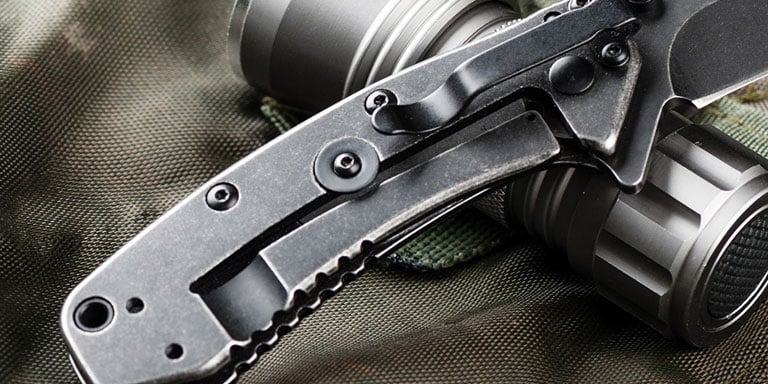
The blade material is one of the most important aspects to consider when choosing a knife. Handle material is also important, as your grip on a knife directly affects the performance of the knife. The perfect knife will feel comfortable in your hand and be easy to use depending on its shape and material. Here are some common handle materials and their defining characteristics.
Composite
Composite knife handles are comfortable in the hand and are durable enough to last a long time. Due to the abundance of chemicals and materials that can potentially constitute them, composite handles are very versatile. Zytel, Ultramid, and Kraton G are popular composite materials often found in knife handles.
Aluminum
Aluminum gives a knife a solid, well-constructed feel without the added weight of heavier metal. This makes it a lightweight knife that's easy to carry around all day.
G10
Increasingly popular in recent years, G10 is a hard, light and strong fiberglass laminate material. It retains its shape, and due to a lack of metal in its composition, it is not subject to corrosion resistance.
Leather
While leather is most commonly used in shoes, some knife handles have it for the same reason boots and shoes do: it's tough, durable, and wears very well over time. Leather handles are frequently found on military style fixed blade knives.
Nylon
Nylon is one of the most common materials for knife handles. Tough, resistant to many chemicals and stable in extreme temperatures, nylon is an excellent and economical handle material.
Rubber
Rubber is well known for its grippy texture. This is precisely why it is used in knife handles - rubber knife handles are very durable and easy to grip for precise cutting.
Steel
Blades aren't always the only part of a steel knife; knife handles sometimes also have a steel construction. Although a steel handle does not offer the same comfort in the hand as leather or rubber, the excellent blade properties of steel also apply in a handle: toughness, resistance to corrosion and ability to withstand long-term wear.
Deployment methods
If you have selected a folding knife, the deployment method is an additional aspect that should be considered. In an emergency situation, opening a knife quickly can help shave precious seconds off your response time. The following deployment methods are found on virtually every knife on the market; make sure you pick the one that's right for you. To see these deployment methods in action, watch our video on how to open and close a tactical knife .
-
thumb stud
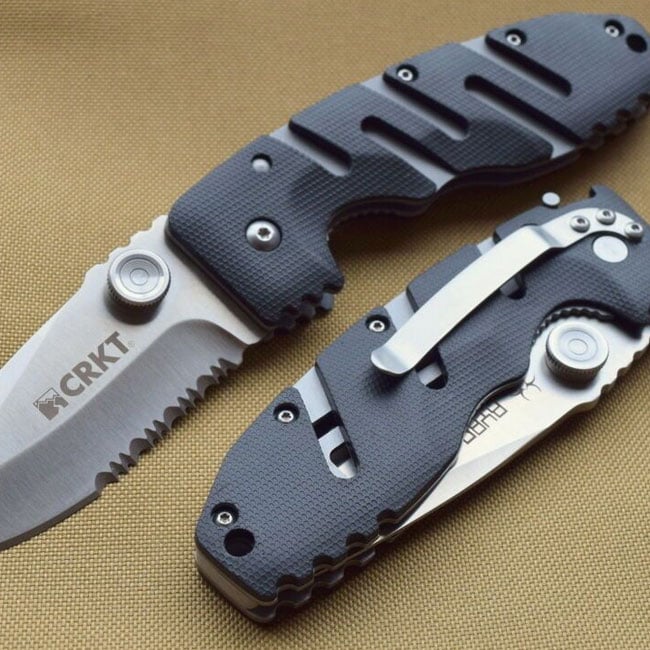
A thumb stud is a tab on a knife blade found near the handle. Although thumb nails can take some getting used to and can hurt a bit when opening a knife, they are definitely a quick and efficient method of deploying a blade.
-
thumb hole

Opening a knife with a thumb hole is a bit easier than using a thumb button. A hole in the blade allows you to use your whole thumb (or even a thumb and index finger) to deploy the blade. Using the entire thumb rest helps distribute pressure for a smoother deployment.
-
Pinball

This elongated piece of metal protrudes from the back of the handle when the blade is closed. To open the knife, simply press the flipper with your index finger. A flipper is one of the best and easiest deployment methods for a folding knife.
-
Nail Nick

Often found on smaller pocket knives, the classic nail requires the use of a fingernail to open the blade. If your nails are short, it may be best to avoid a knife that extends through the nick of the nail.
Locking mechanisms
Once you've opened your knife, it's important that it doesn't close when you use it. Tactical knives are made with a variety of locking mechanisms. These locks are a safety feature to ensure that the blade does not fall on your fingers. The blade of a locked folding knife will only stay extended until you decide to engage the locking mechanism and close it. Here are some of the most common types of locking mechanisms on tactical knives. To see how they work, be sure to watch our video on how to open and close a tactical knife .
Liner lock
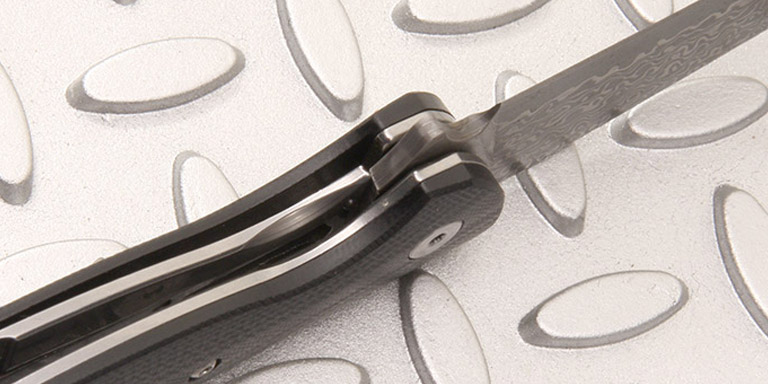
One of the most common and easiest to use knife locking mechanisms, the liner lock is a piece of metal inside the handle of a knife. When the knife blade is closed, it holds the liner lock in place. The tension of the lock naturally pushes it away from the handle and under the blade, however, when the blade opens, the liner slips into place and prevents the blade from closing. To disengage the lock, simply push it away from the blade and towards the handle, and slide the blade closed. Liner locks are advantageous for their solid construction. It's very difficult to accidentally disengage a liner lock, ensuring the blade only closes when you want it to.
Frame lock

A frame lock is very similar to a liner lock - it slides into place under the blade as the knife opens. Instead of an integrated piece of metal, however, a frame lock is just a part of the frame itself designed to lock the blade in place. The process of engaging a frame lock is the same as engaging a liner lock: just push it out of the way and close the blade. Like a liner lock, it is nearly impossible to accidentally disengage a frame lock.
Lockdown

A lockback is an exposed piece of metal on the back of a tactical knife. A notch at the end of the lock (near the handle) hooks into a notch built into the blade, holding the knife firmly in place when open. Closing a locking knife requires two hands; press down on the exposed part of the spine with one hand to disengage the blade and rotate the blade closed with the other hand. This two-handed requirement ensures that the knife blade will only close when you push it deliberately, protecting your hands and fingers while using the knife.
Button lock
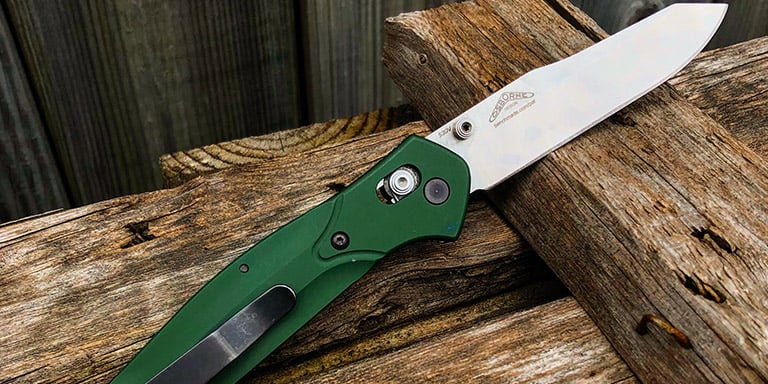
The locking button is probably the easiest way to close your knife. A spring in the handle is attached to both the knife blade and the button. Pushing the button down unlocks the blade and allows the spring tension to take over. Simply push the blade against the tension (while holding the button down) to close your knife. While knives with locking button are very easy to close, this is also their danger: they are easy to close. Be sure to avoid accidentally pressing the button during use so that the blade does not close on your fingers.
As is probably clear by now, tactical knives are very diverse tools. Between blade types, blade lengths, blade materials, handle materials, locking mechanisms, and a myriad of other features, finding the right knife can be an overwhelming process. The best thing to do, however, is to think about what you're going to use your knife for and find the features that match. Once you narrow it down, it won't be as difficult. Use the abundance of knives to your advantage. It might take some effort to sift through, but the long list of useful features means your perfect tactical knife is only a few searches away.
0 comments